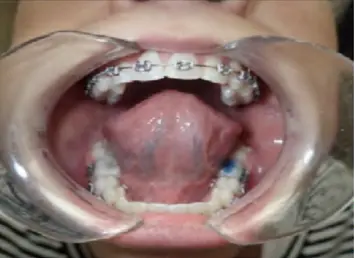



About Dr. Zaghi
Dr. Soroush Zaghi is the Founder of The Breathe Institute and a pioneer in tongue tie diagnosis and treatment. Dr. Zaghi received his medical degree from Harvard Medical School. He completed his residency in ENT (Otolaryngology- Head and Neck Surgery) at UCLA, followed by a Sleep Surgery Fellowship at Stanford University. His specialized training focuses on providing comprehensive treatment for various conditions, including tongue-tie, nasal obstruction, mouth breathing, snoring, and obstructive sleep apnea. Dr. Zaghi is also deeply involved in clinical research related to sleep-disordered breathing, and has published over 80 peer-reviewed research papers in the fields of neuroscience, head and neck surgery, and sleep-disordered breathing.
If a tongue tie is present that needs to be released, Myofunctional Therapy (and sometimes Craniosacral Therapy) exercises are prescribed. Our therapists help patients perform pre-procedure Myofunctional Therapy exercises to create “muscle awareness”, strengthen and tone the tongue and “wake up” parts of the child’s tongue that have been dormant. As soon as the child can perform the prescribed exercises proficiently, he or she will be scheduled for the release procedure.
Most kids over 3 years old thrive in our Mini-Myo program. Exercises are designed to tone and strengthen the tongue and face. Sessions also help to “desensitize” children to our office and prepare them for their upcoming procedure. We have the children sit in the dental chair, show them the fun instruments we may use, and talk them through the appointment process so they feel comfortable and excited by the time their real appointment arrives. For our most anxious patients, we offer nitrous oxide or laughing gas to make the experience as comfortable as possible.
The surgical site is prepared with PhotoBioModulation Therapy. The Summus Laser that is used for this phase of the procedure “pre-loosens” the tissues including the fascia so that we can perform the most minimally invasive release.
The frenectomy itself is performed with a state-of-the-art LightScalpel CO2 laser. (Learn more about it here) The LightScalpel CO2 Laser is very safe and extremely precise. Precision in a tongue tie release procedure translates to minimal bleeding and less post operative pain. Our hybrid technique (Summus Laser + Light Scalpel CO2 Laser) is designed to maximize tongue mobility and improve overall function.
Dr, Green prefers to use sutures to close wounds (except in infants) because they facilitate the best healing and require the least amount of home care.
Immediately after the tongue tie release, we will sit with your child to make sure he or she feels physically comfortable, emotionally safe and is ready to head home. Before you leave, we will give you post-op instructions and answer any questions you may have.
Follow-up visits are critical for optimal healing. During the initial post op visits, we will re-introduce PhotoBioModulation Therapy with the Summus Laser. This treatment will decrease pain, reduce inflammation and promote optimal healing.
Virtual post op visits are available for questions, concerns and routine post-acute follow up.
We may suggest myofunctional therapy and/or craniosacral therapy as part of your child’s post procedure rehabilitation program. The exercises and functional improvements that the therapists prescribe are all designed to improve your child’s posture, breathing, speaking, feeding, chewing, and growth.